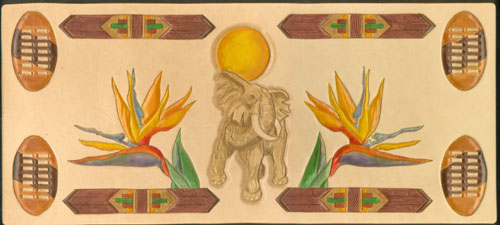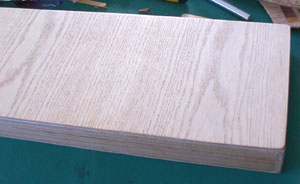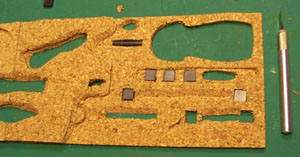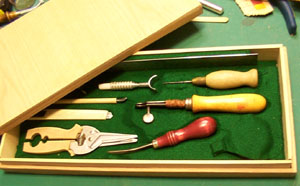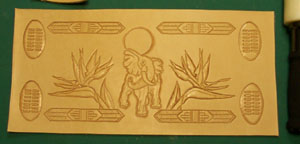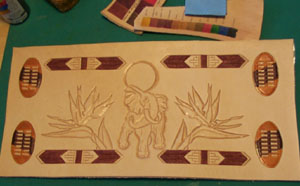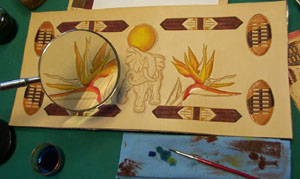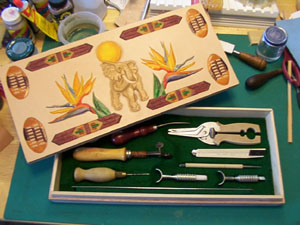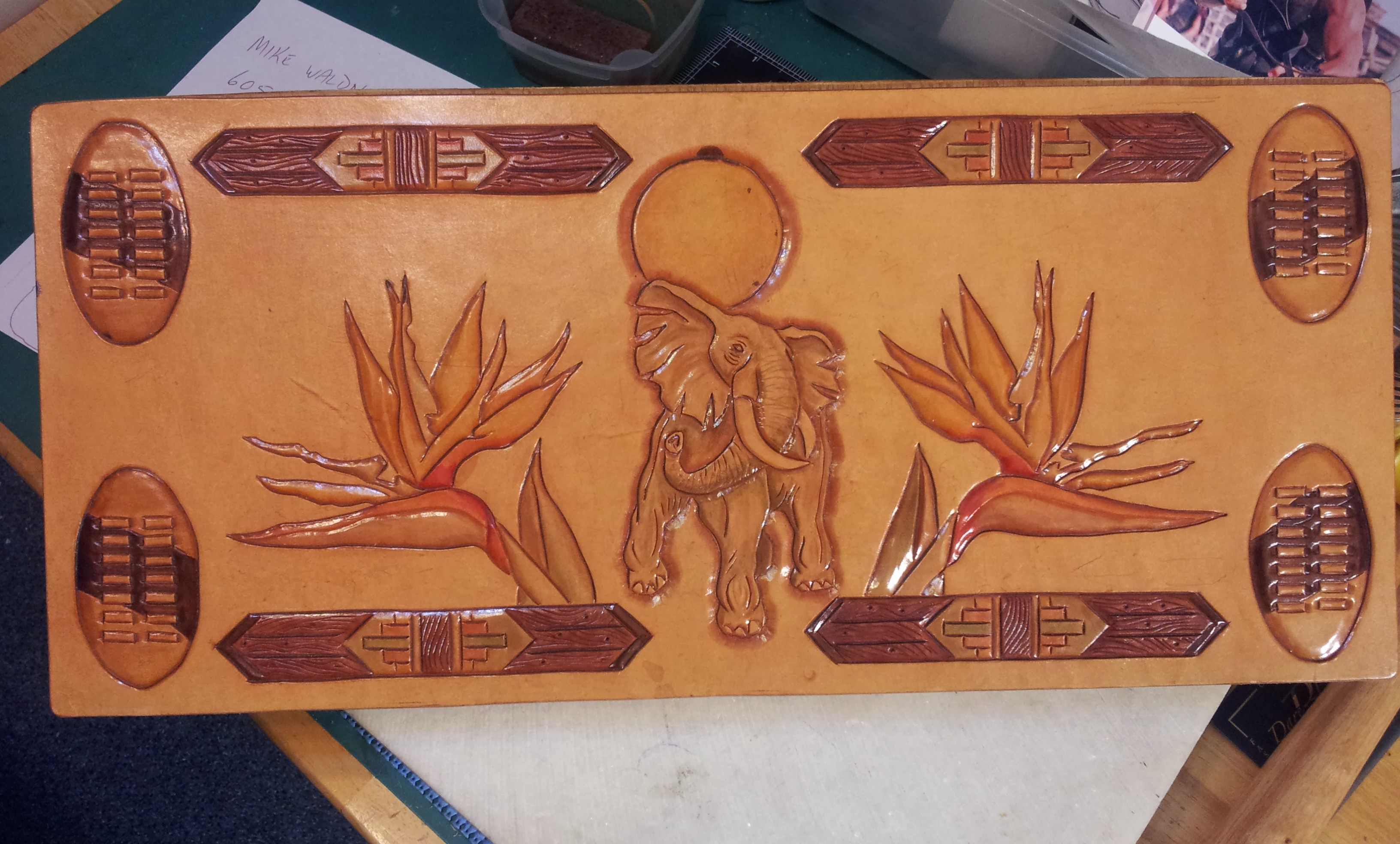I made these very simple Huaraches today. They are also known as Tarahumara Running Sandals, used by many long distance runners.
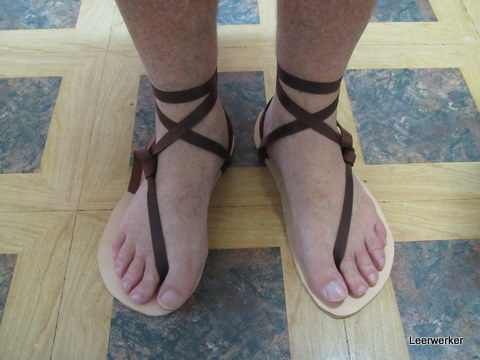
My aim was to use leather easily available at a Tandy store, some contact adhesive, and a hole punch.
Here are the steps:
First draw a pattern for the soles - there are many videos on YouTube that show you how to do this.
On this pattern you will see the dot I marked between my big toe and the rest as well as the two marks on either side of the heel to show where my ankles are. I then used the scribe awl to outline the patterns onto the leather. I used a 4-5oz veg tan (tree bark tanned) leather - you can get a single shoulder or a belly for the job.
Make sure your two patterns - one for each foot - faces up so that left is left and right is right. Have the grain side of the leather facing up so that you will be walking on the smooth leather.
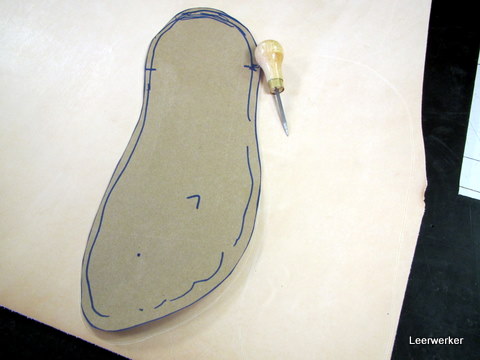
These upper soles are then cut out of the leather on those scribed lines. You do not need a fancy knife like this - a sharp utility knife will work well.
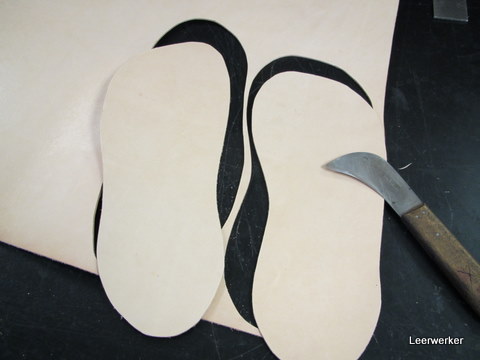
Where I marked the spot between my toes, I punched two holes so that I can cut two lines to form a slot between them. One hole was where I marked the spot and the second hole is more towards the front of the sole.
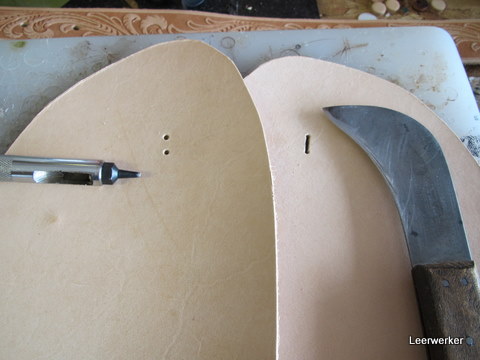
I got 60" latigo saddle strings from Tandy - 1/2" wide - they are nice and soft and very strong. One tip went through the cut slot in such a way that when I take the strap to the outside of my foot, the grain side will be on top. On the next photo I have applied contact adhesive to the tab of saddle string sticking out on the bottem of the sole as well as to the sole where the tab would fold flat.
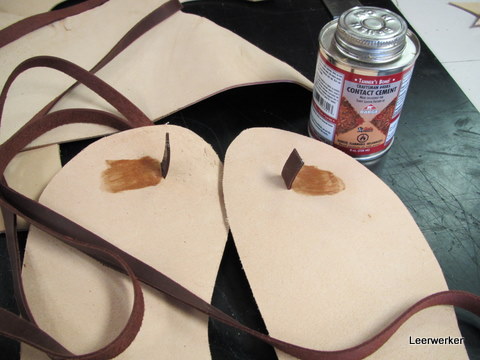
The tabs are bent over to glue them onto the bottom of the soles. Now the soles are glued down onto another layer of leather - flesh side to flesh side.
This makes the soles a bit stronger and the grain side should wear a bit better. You could just use a thicker leather to start with, but that would mean that you cannot hide the tabs of the saddle string between the two layers of leather that form the sole.
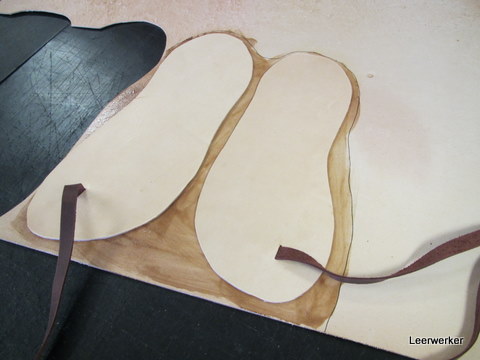
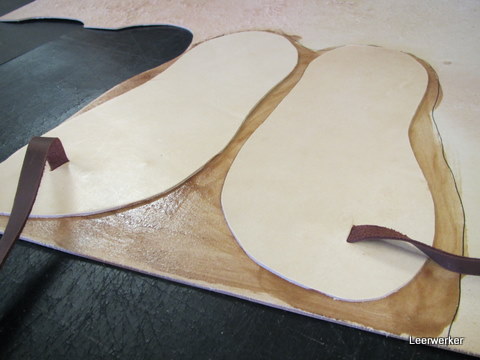
The bottom layer of leather is now cut out to shape according to the top sole that had been glued to it. Careful not to cut through your saddle strings.
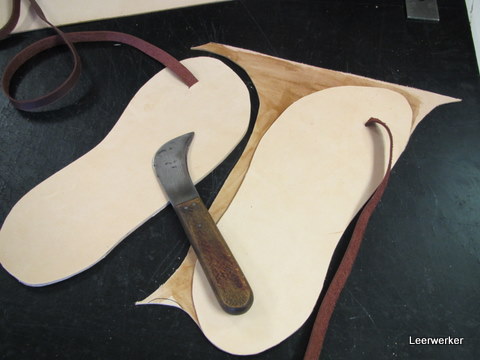
The last step is to make slots for the strings on the sides where your ankles are going to be. I made them about 3/16" from the sides, through both layers of leather. The strings need to slide through these slots freely so that you can adjust the fit of the huaraches.
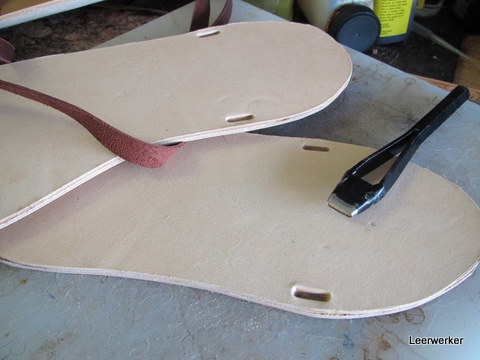
There are many videos on YouTube again to show you how to tie these to your feet - basically the method I used was from the toes to the outside of the foot, through the slot, round the back of the foot to the other side, again through the slot, then to the string running from the toes, around your ankles and tied down.
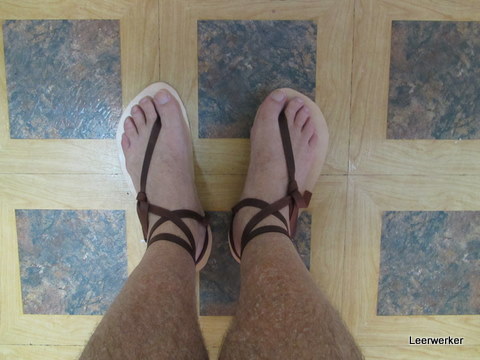
In the back view you can see I need to trim these guys a bit - the soles are too big. Rather too big than too small.
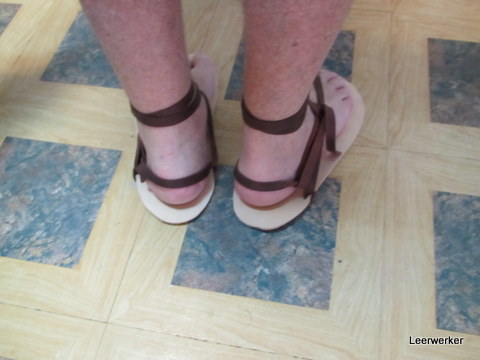
I wore them this evening for a few hours - very comfortable and very secure!
